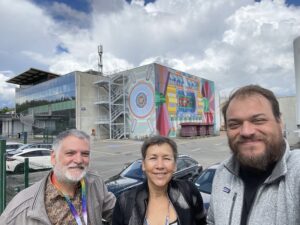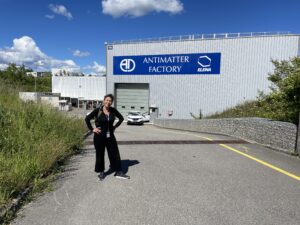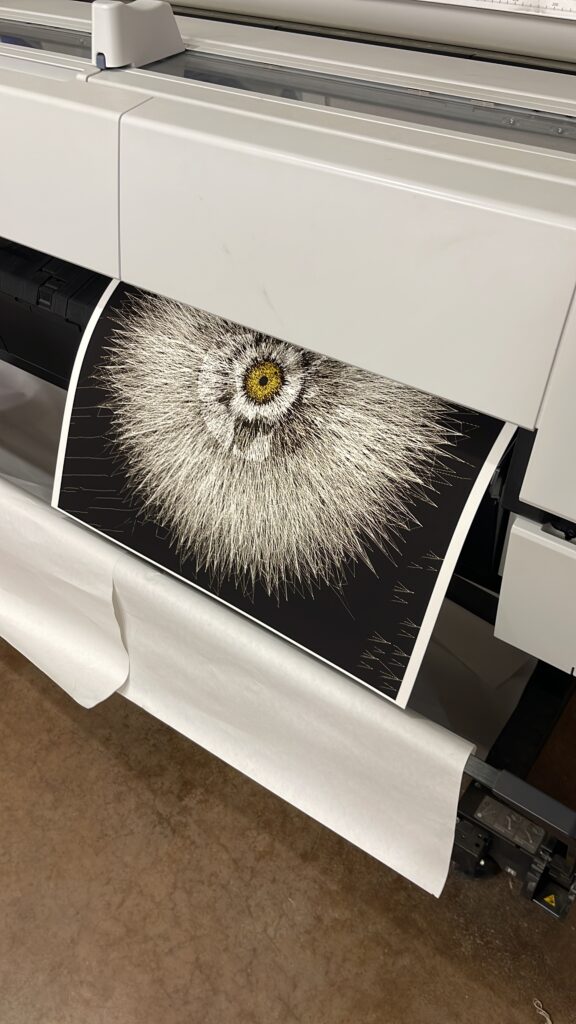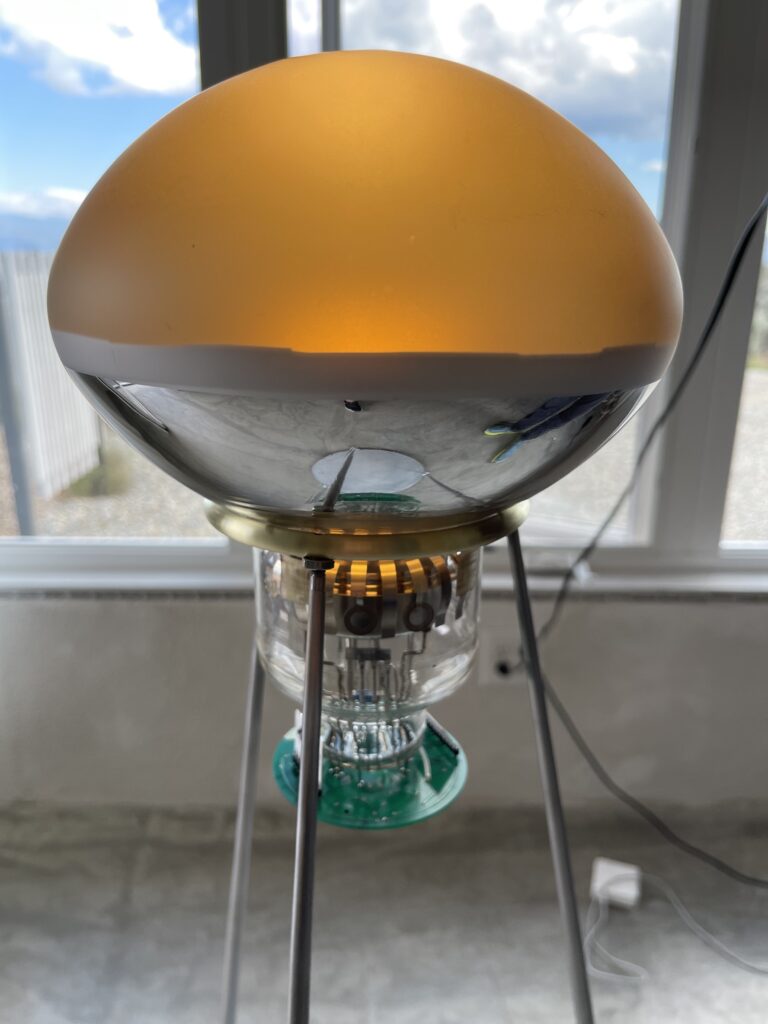As part of my guest artist research, Georgia Schwender introduced me to guest composer Mischa Zupko, and we decided to collaborate. We have been sharing our research and inspirations. Mischa shared his explorations of sympathetic resonance—a well-understood concept in acoustics that also plays a critical role in the search for new particles. This concept helps physicists uncover the nature of matter and the fundamental reasons why the universe exists.
In nature, it is well established that all matter vibrates at a specific frequency. When an object’s natural frequency is excited by an identical frequency, the intensity of that vibration increases. These “frequency bumps” provide a lens to peer inside the atom and unlock the secrets of the universe. Mischa has been deeply delving into this scientific phenomenon.
Meanwhile, I have shared with Mischa my research on neutrino detectors and their role in detecting neutrinos—tiny subatomic particles often referred to as “ghost particles.” Despite their minimal interaction with matter, neutrinos are among the most abundant particles in the universe. I am also deeply interested in quantum physics, the theoretical framework essential for understanding the behavior, interactions, and properties of neutrinos and all particles.
Mischa explains, “The Civitas Ensemble (piano, violin, cello, and saxophone) will be the focus of the musical composition. The work will also include objects placed around the stage, configured with the aid of electronics to sympathetically resonate when certain pitches or combinations of pitches are played by the ensemble. In other words, sounds will emanate from places unseen by the naked eye. Much like how electrons were first observed in the trails left in C.T.R. Wilson’s cloud chamber, the vibrating particles that make up the objects on the stage will be revealed by their musical tones. These tones will then be run through Max MSP to create a controlled feedback loop that further amplifies the sympathetically resonating object and allows for the manipulation of that resulting resonance.”
In the past year, I have been exploring augmented reality as a medium to communicate science concepts. Collaborating with my creative team, we have produced several AR experiences, and I will be integrating AR as a key element in this collaboration.
We are working on a sound-activated augmented reality installation. The piece will be grounded in genuine scientific concepts, visualizing abstract theories and exploring the quantum underpinnings of our universe through the universal language of music and the magic of AR technology. The sounds of the instruments, filtered through Max MSP software, will be translated into a digital format that drives dynamic AR visuals. Audience interactions with mobile devices will not exist in isolation; instead, they will contribute to a collective visualization, illustrating the interconnectedness of the experience and the impact of each participant’s choices on the whole.
We have been meeting via Zoom for the past year for the ideation phase and are now entering the production phase. We are excited to bring together our ideas and research to create an interactive audiovisual experience that communicates these important physics concepts at a Chicago venue to be determined. Stay tuned!









